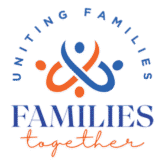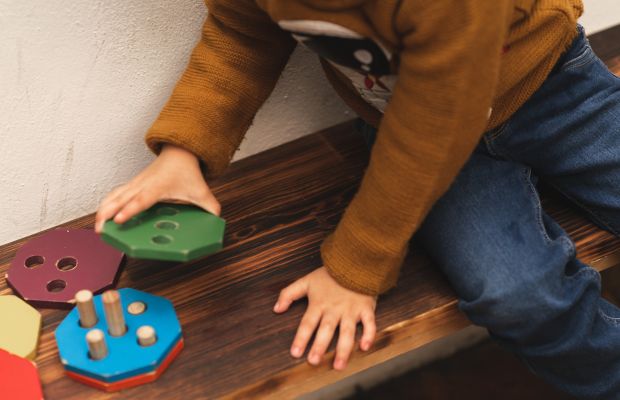For individuals with autism spectrum disorder (ASD), the world can often feel overwhelming and unpredictable. Sensory sensitivities, challenges with executive functioning, and difficulties with social communication can make navigating everyday environments a significant source of stress. Creating autism-friendly environments – spaces that are thoughtfully designed to reduce sensory overload, provide structure, and promote a sense of safety and calm – is crucial for enhancing well-being, fostering independence, and maximizing participation in daily life. This guide offers practical strategies for transforming both home and community spaces to better support individuals with autism.
Understanding Sensory Needs in Autism
A cornerstone of creating autism-friendly environments is a deep understanding of individual sensory needs. Many people with autism have unique ways of processing sensory information, which can manifest as:
- Hypersensitivity (Over-Responsiveness): Being easily overwhelmed by sounds, lights, smells, textures, or even visual clutter. A fluorescent light hum, a strong perfume, or a scratchy clothing tag can be intensely distressing.
- Hyposensitivity (Under-Responsiveness): Needing more sensory input to register it, or actively seeking intense sensory experiences (e.g., constantly touching objects, craving deep pressure, spinning).
- Sensory Seeking: Actively looking for certain types of sensory input to regulate themselves (e.g., chewing on objects, flapping hands, needing to move constantly).
- Difficulty with Sensory Modulation: Challenges in filtering out irrelevant sensory information, making it hard to focus in busy environments.
Because each individual’s sensory profile is unique, what is calming for one person might be overwhelming for another. Therefore, a personalized approach to environmental design is essential.
Designing Autism-Friendly Home Spaces
The home should be a sanctuary – a place where an individual with autism feels safe, comfortable, and regulated. Thoughtful design choices can significantly reduce stress and promote functional independence.
Lighting and Sound Considerations
These are often primary sources of sensory discomfort:
- Lighting:
- Natural Light: Maximize natural light where possible, as it’s often less harsh than artificial light.
- Soft, Diffused Lighting: Use lamps with dimmers instead of harsh overhead fluorescent lights. Consider full-spectrum bulbs that mimic natural light.
- Avoid Flickering: Check for old fluorescent lights that might flicker, which can be highly distracting and uncomfortable.
- Light Filters: Consider sensory light covers for overhead lights if they must be used.
- Sound:
- Noise Reduction: Use carpets, rugs, heavy curtains, and soft furnishings to absorb sound.
- White Noise/Calming Sounds: A white noise machine or quiet, calming music can help mask unpredictable background noises.
- Headphones/Ear Defenders: Have noise-canceling headphones readily available for overwhelming situations.
- Clear Communication Zones: Designate areas where communication is prioritized and background noise is minimized.
Organization and Structure Systems
Predictability and visual clarity can greatly reduce anxiety and improve executive functioning:
- Visual Schedules: Use visual aids (pictures, written lists) for daily routines (e.g., getting dressed, bedtime), making transitions smoother.
- Labeled Storage: Clearly label bins, drawers, and shelves with words and/or pictures so items can be easily found and put away. This reduces visual clutter and promotes independence.
- Designated Zones: Create specific areas for different activities (e.g., a quiet reading corner, a play area, a workspace) to provide structure and reduce confusion.
- Minimal Clutter: Keep spaces tidy and free from excessive visual stimuli. Too many objects can be overwhelming and distracting.
- Consistent Placement: Try to keep frequently used items in the same location to build predictability.
Safe Spaces and Retreat Areas
Having a designated calm down spot is vital for self-regulation:
- Calming Nook: Create a small, enclosed, and easily accessible space (e.g., a tent, a beanbag chair in a corner, a closet transformed into a sensory den).
- Sensory Tools: Equip the space with calming sensory items like weighted blankets, soft pillows, fidget toys, quiet books, or a lava lamp.
- Clear Boundaries: Ensure this space is understood as a place for retreat, not punishment.
- Privacy: Allow the individual to have control over who enters and when.
Advocating for Community Accommodations
Creating autism-friendly environments extends beyond the home into schools, businesses, and public spaces. Advocating for accommodations helps promote inclusion and accessibility for individuals with autism.
Community Accessibility Features
Many public spaces are beginning to implement features that make them more welcoming:
- Sensory-Friendly Hours/Events: Many movie theaters, museums, and attractions in places like Miami now offer “sensory-friendly” sessions with reduced lighting, lower sound, and relaxed rules (e.g., allowing movement or talking).
- Quiet Rooms/Spaces: Public venues (airports, malls, event centers) increasingly provide designated quiet zones or sensory rooms where individuals can decompress.
- Visual Supports: Some places use visual schedules or picture-based signage to aid in navigation and understanding expectations.
- Trained Staff: Employees who have received autism awareness training can better understand and respond to the needs of individuals with ASD.
- Clear Signage and Navigation: Easy-to-understand signs with pictures can help reduce anxiety about navigating unfamiliar places.
- Reduced Overstimulation: Businesses can consider reducing loud music, flashing lights, or strong scents.
For parents and advocates in Miami, Florida, connecting with local autism organizations like CARD (Center for Autism and Related Disabilities) at the University of Miami, or Autism Speaks, can provide valuable information on businesses and venues offering specific accommodations. Advocating politely and constructively with local businesses, schools, and government bodies can lead to positive change. Share your family’s experiences and offer practical suggestions for improvement.
Creating autism-friendly environments is an ongoing process of observation, adaptation, and advocacy. By understanding sensory needs, designing supportive home spaces, and championing accommodations in the community, we can empower individuals with autism to navigate their world with greater comfort, confidence, and independence. At Families Together FL, we believe that every environment should be a place where individuals with special needs can thrive.

